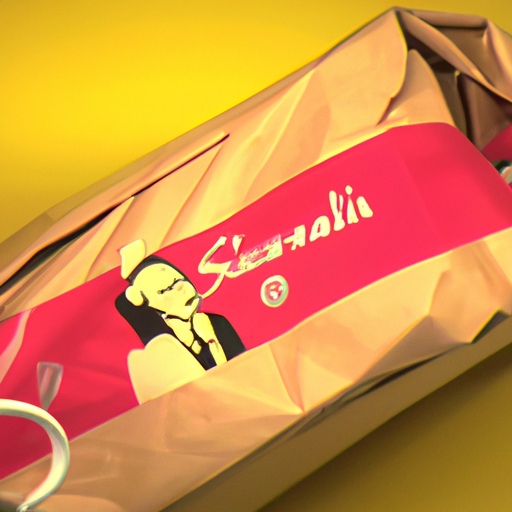
-
Table of Contents
- Sustainable Packaging Challenges and Solutions
- The Environmental Impact of Packaging
- Challenges in Achieving Sustainable Packaging
- 1. Cost
- 2. Lack of Infrastructure
- 3. Consumer Perception
- Sustainable Packaging Solutions
- 1. Material Selection
- 2. Lightweighting
- 3. Design for Recycling
- 4. Reusable Packaging
- 5. Extended Producer Responsibility
- Summary
Sustainable Packaging Challenges and Solutions

As the world becomes more aware of the environmental impact of human activities, the need for sustainable practices in all industries has become increasingly important. One area that has received significant attention is packaging. Packaging plays a crucial role in protecting products during transportation and storage, but it also contributes to waste and pollution. In this article, we will explore the challenges faced by the packaging industry in achieving sustainability and discuss potential solutions.
The Environmental Impact of Packaging
Packaging materials, such as plastic, paper, and metal, have a significant environmental impact throughout their lifecycle. The extraction of raw materials, manufacturing processes, transportation, and disposal all contribute to greenhouse gas emissions, energy consumption, and waste generation. Here are some key statistics to highlight the scale of the problem:
- According to the United Nations Environment Programme, packaging waste accounts for around one-third of all municipal solid waste globally.
- In the United States alone, packaging waste makes up about 30% of total municipal solid waste, with only a fraction being recycled.
- Plastic packaging is a major concern, with over 8 million tons of plastic entering the oceans each year, causing significant harm to marine life.
Challenges in Achieving Sustainable Packaging
The packaging industry faces several challenges in transitioning to more sustainable practices. These challenges include:
1. Cost
One of the main obstacles to adopting sustainable packaging solutions is the perceived higher cost compared to traditional packaging materials. Sustainable alternatives, such as biodegradable or compostable materials, often come at a premium price. This cost barrier can deter companies from making the switch, especially for small businesses with limited budgets.
2. Lack of Infrastructure
Another challenge is the lack of infrastructure to support sustainable packaging. Recycling facilities and composting systems are not widely available in many regions, making it difficult for businesses and consumers to properly dispose of sustainable packaging materials. Without the necessary infrastructure, these materials may end up in landfills, negating their environmental benefits.
3. Consumer Perception
Consumer perception and behavior play a significant role in the adoption of sustainable packaging. While there is a growing demand for eco-friendly products, consumers may still prioritize convenience and affordability over sustainability. This can create a barrier for companies looking to invest in sustainable packaging solutions, as they fear losing customers if they increase prices or change packaging formats.
Sustainable Packaging Solutions
Despite the challenges, the packaging industry is actively exploring and implementing sustainable solutions. Here are some examples of innovative approaches to sustainable packaging:
1. Material Selection
Choosing the right materials is crucial for sustainable packaging. Companies are increasingly opting for renewable and biodegradable materials, such as plant-based plastics, paper, and cardboard. These materials have a lower environmental impact and can be recycled or composted more easily than traditional plastics.
2. Lightweighting
Reducing the weight of packaging materials can significantly decrease the environmental impact. Lightweighting involves using thinner materials or redesigning packaging to use fewer resources while maintaining product protection. This approach reduces material consumption, transportation costs, and greenhouse gas emissions.
3. Design for Recycling
Designing packaging with recyclability in mind is essential for closing the loop on materials. By using mono-materials or easily separable components, packaging can be more efficiently recycled. Additionally, clear labeling and consumer education can help improve recycling rates by ensuring that consumers know how to properly dispose of packaging materials.
4. Reusable Packaging
Implementing reusable packaging systems can significantly reduce waste generation. Companies can explore options such as refillable containers, returnable packaging, or subscription-based models that encourage customers to return packaging for reuse. Reusable packaging not only reduces waste but also provides a unique selling point for businesses.
5. Extended Producer Responsibility
Extended Producer Responsibility (EPR) is a policy approach that holds manufacturers responsible for the entire lifecycle of their products, including packaging. By implementing EPR programs, companies are incentivized to design packaging that is easier to recycle or reuse. EPR also encourages collaboration between manufacturers, retailers, and waste management systems to create a more sustainable packaging ecosystem.
Summary
Sustainable packaging is a complex challenge that requires a multi-faceted approach. The packaging industry faces obstacles such as cost, lack of infrastructure, and consumer perception. However, through innovative solutions like material selection, lightweighting, design for recycling, reusable packaging, and extended producer responsibility, progress is being made towards more sustainable packaging practices.
By adopting these solutions, companies can reduce their environmental impact, meet consumer demand for eco-friendly products, and contribute to a more sustainable future. It is crucial for businesses, consumers, and policymakers to work together to overcome the challenges and embrace sustainable packaging as a standard practice.
